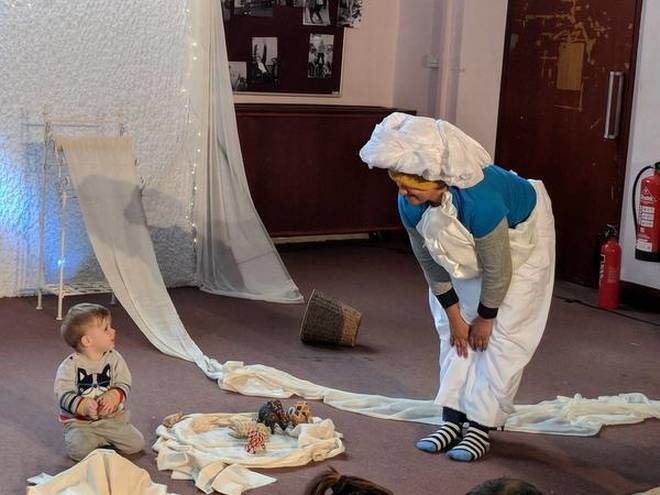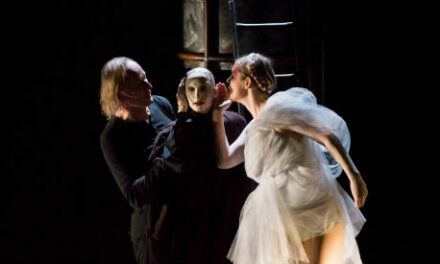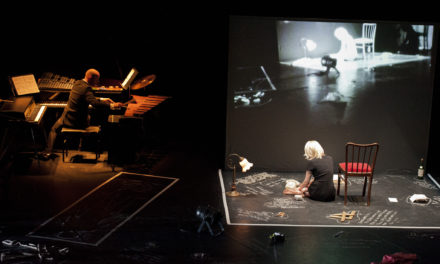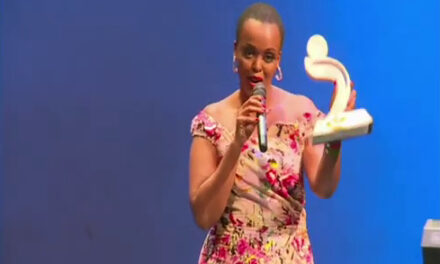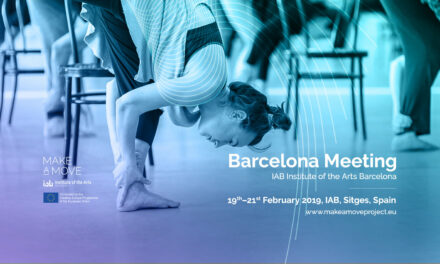An early start
One of the reasons that this quiet revolution is taking place is because of arts funding that enabled some European groups, that are pioneers in the field, to travel to India and collaborate with local practitioners. For instance, in 2016, Roberto Frabetti of Italy, whose group, La Baracca, has more than 37 TEY works in its repertoire, conducted a workshop in Mumbai facilitated by the Gillo Repertory. This year, Gillo’s artistic director Shaili Sathyu premiered her very first TEY piece, the non-verbal Chidiya, Udd! at a festival in Bologna. At various points, the piece involves its actors sleeping on stage, or playing with soft toys and jowar seeds. La Baracca’s own works have been diverse: some driven by narration and humor, others built on a palette of light and sound. The bulk of the works emerging from India focus on the use of some kind of material as stimulus.
The works for toddlers by Samta Shikhar and Subhashim Goswami, who were the first off the blocks in this field, made use of kala chana in Bends And Flows (2012) and kitchen utensils in Dinner Is At 8 (2016). Last year, Theatr Iolo, Wales’ leading Theatre for Young Audiences (TYA) company, conducted workshops in Kolkata with cultural organization ThinkArts, and that engagement resulted in the commissioning of three materials-based TEY works: by Sanyukta Saha, Sananda Mukhopadhyaya, and Pavel Paul. Earlier this year, the trio was in Wales and presented draft versions of their pieces to test audiences featuring babies.
“It is only now that I can say it is a finished piece,” says Mukhopadhyaya, emboldened by her interactions in Wales with mentors Sarah Argent and Kevin Lewis of Theatr Iolo.
Her Warp & Weft, in which she makes extensive use of fabric, was part of Harkat Studio’s festival line-up.
Growing pains
The principles of TEY isn’t an exact science, but European groups have certainly built a knowledge base albeit one that isn’t prescriptive. In Wales, Mukhopadhyaya performed to homogeneous audiences in which the age group stipulated in the advisory (six to 18 months) was closely adhered to. At Harkat, since such advisories are seldom read, children of other ages have also been allowed in, to heartening results. Similarly, the muted color palettes favored in the West, might give way to more color and brightness, because babies in India are already overstimulated enough to take that kind of stimuli in their toddler.
Mukhopadhyaya’s second piece for toddlers, intriguingly titled Oool, will be staged this Sunday. It will be performed by Choiti Ghosh, with whose Tram Theatre Trust Mukhopadhyaya has frequently collaborated on several object-theatre works. This work has emerged from yet another Indo-European artists mentorship program, that of the German group, Helios Theater—who toured with their Woodbeat last year—and Anurupa Roy’s Katkatha Puppet Arts Trust of Delhi. This has resulted in the setting sail of a whopping eight works, now in various stages of production, including Kriti Pant and Bikram Ghosh’s Plasticity which was performed earlier this month at Harkat.
For Mukhopadhyaya, her two productions crown an extended engagement with TEY. She attended workshops with Frabetti and Helios’ Barbara Kölling, before the India Wales Fund made the collaboration with Theatr Iolo possible. She’s riding a wave along with her cohorts to lay the foundations of an inchoate genre, in India at least. One of the most compelling memories from her Welsh stint was to have a room full of babies laugh in unison during Warp & Weft.
“There was a wave of baby laughter, followed by a second wave of titters from parents,” says Mukhopadhyaya. “It was an absolutely unforgettable moment.”
This post was written by the author in their personal capacity.The opinions expressed in this article are the author’s own and do not reflect the view of The Theatre Times, their staff or collaborators.
This post was written by Vikram Phukan.
The views expressed here belong to the author and do not necessarily reflect our views and opinions.

